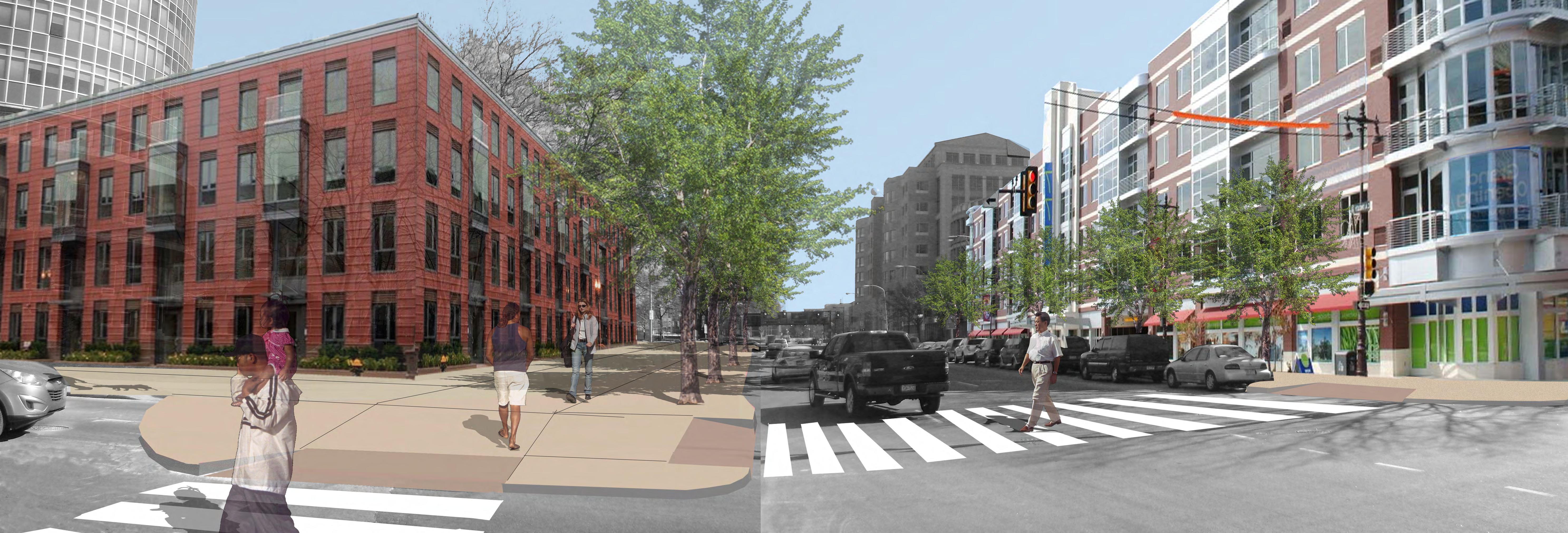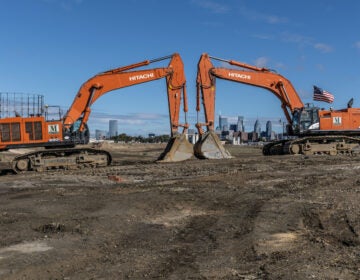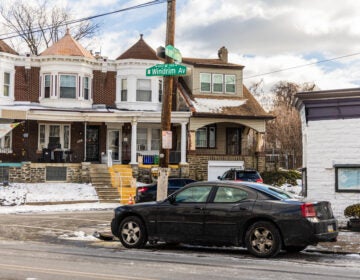Draft plan for Central District released

The draft comprehensive plan for Philadelphia’s Central District calls for revitalizing civic spaces in Center City, encouraging more development along Ridge Avenue and North Broad Street in West Callowhill, and making more of a neighborhood around Franklin Square.
Center City public realm improvements, centered on bringing more life to these spaces, include adding a pavilion and landscaping to Reyburn Plaza ( that’s the spot at Broad and Arch where the Sorry game pieces are) and a TKTS kiosk in the City Hall courtyard. While the Penn Center courtyard is not city owned, Senior Planner Laura Spina said the plan recommends making that space more lively as well, perhaps with farmers markets or food trucks. Recommendations here also include revitalizing City Hall. “It’s the crown jewel of our architecture,” Spina said, and it should be treated as such.
Recommendations for Ridge Avenue and North Broad Street include changing the zoning to allow for denser and more commercial development, especially around transit nodes on Broad Street. Because Ridge Avenue runs on the diagonal, it creates triangular, hard-to-develop pieces of ground at intersections. These could be used as green space and for storm water management, Spina said.
With the recent opening of the Barnes Museum and development of the Granary building, development is picking up in West Callowhill, Spina said, but there is still room for more – particularly more commercial space. The area could support about 1.6 million square feet of new construction, even if that construction is kept to low- and mid-rise buildings.
Callowhill/Chinatown North recently got a plan of its own that is incorporated into this draft comprehensive plan. Recommendations taken from it include adding new parks and green space and transforming the Reading Viaduct into an elevated park.
Franklin Square itself has been much improved in recent years, but Spina said the area around it is too focused on cars, with overly wide streets and seven acres of surface parking. Recommendations for this area include shrinking the vehicular lanes of Race Street and adding wider sidewalks, extending Cherry Street between 7th and 8th and redeveloping the publicly owned police headquarters site – aka the Roundhouse – and the 800 block of Race Street, which is also publicly owned.
That’s just a quick glance at the proposed portion of Philadelphia2035 that aims to guide the future of a swath of the city that stretches river-to-river and includes not only Center City’s business, cultural and civic hubs but neighborhoods including: Northern Liberties, East Poplar, West Poplar, Callowhill, Old City, Chinatown, Society Hill, Washington Square West, Queen Village, Bella Vista, Hawthorne, Francisville, Fairmount, Spring Garden, Logan Square, Rittenhouse Square, and Southwest Center City.
With all that geography and complexity, Spina told the Philadelphia City Planning Commission this week that the public comment period will remain open until May 15. Input from a series of public meetings and discussions with key stakeholders has been used to develop the draft, Spina said. Staff will make any needed adjustments based on comments on the draft, and then bring the plan back to the Planning Commission for a vote on adoption on June 11. (The draft plan is expected to be posted Wednesday on the Philadelphia2035 website. Comments can be emailed directly to Spina at Laura.Spina@phila.gov.)
The draft plan calls for some zoning changes. Many are corrective, designed to make the zoning classification match what the land is actually being used for. For example, much of Northern Liberties’ residential areas are zoned industrial. The draft plan also calls for re-examining the setting of parking space maximums for development within the district. This idea was considered during development of the new zoning code, but was removed. It suggests the creation of four transit-oriented development overlays where developers would get special incentives to build around el and subway stops. In Southwest Center City, zoning in some areas would be changed from CMX1, which allows corner stores, to CMX2, where some commercial space is required. “The neighborhood wants to preserve their corner stores, as they have been losing a lot,” Spina said.
Spina said the most controversial proposed zoning change is taking the zoning down a notch around Chestnut and Walnut streets, east of Broad, from CMX5 to CMX4. Spina said this change was perhaps the most controversial, but planners think it would provide a better transition from the high-rises of Market Street to the north and the rowhouse neighborhoods to the south. “It also matches (the zoning) on the West Side of Broad,” she said.
Other recommendations: Constructing a new combined 6th and 9th district police building. Creating a No Use to New Use Task Force to determine how to turn long-vacant properties into something viable. Rehabilitating several transit stations, including the City Hall subway stop, and adding electronic signs that tell transit riders when the next train, subway or bus is coming. Creating a cultural corridor transit line that would take people to key destinations – this would begin with Bus Rapid Transit.
Planning Commissioners had no questions after the presentation, but George Moy, a founder and board member of the Philadelphia Chinatown Development Corporation, had a few comments and suggestions.
Moy said his organization is in favor of relocating police headquarters and creating a new combined HQ for the 6th and 9th districts. He noted that police vehicles take up “more than one-third of the parking at curbside in the area.” When they leave in the evening, the spaces are empty, but cannot be used because they are reserved for official business only.
Moy asked about the PECO substation. Will it get larger? Could trees be planted to shield it from view? Spina said planners talked to PECO about these issues, and were told there are no plans for enlargement and “they are amenable to site improvements.”
WHYY is your source for fact-based, in-depth journalism and information. As a nonprofit organization, we rely on financial support from readers like you. Please give today.






